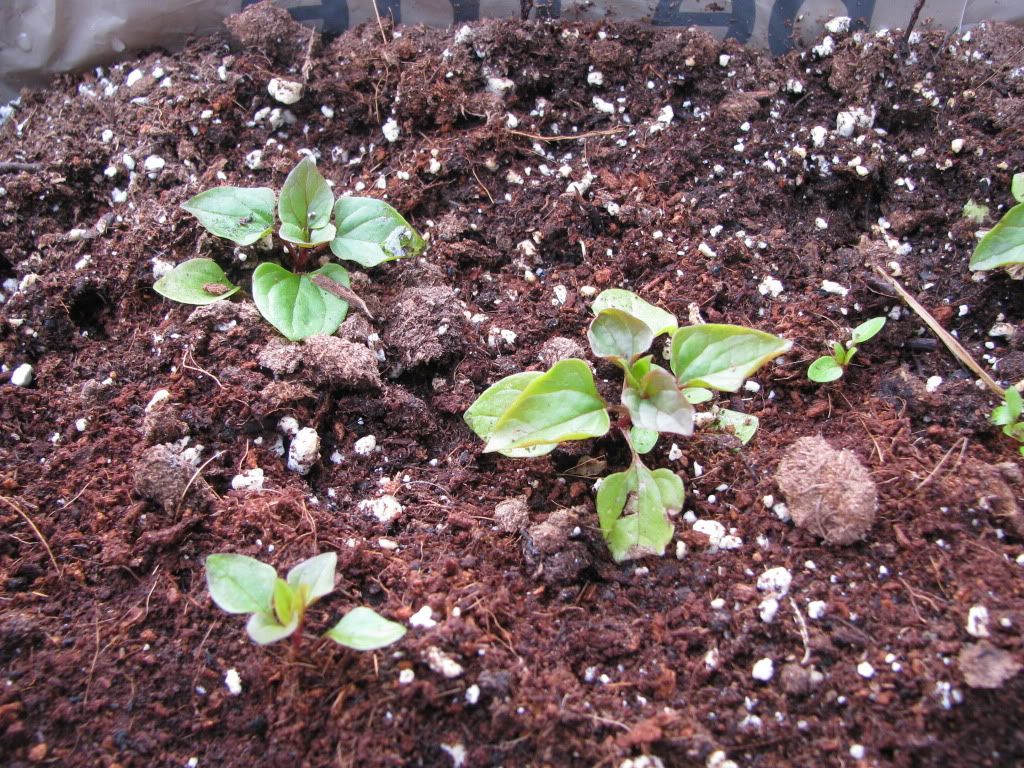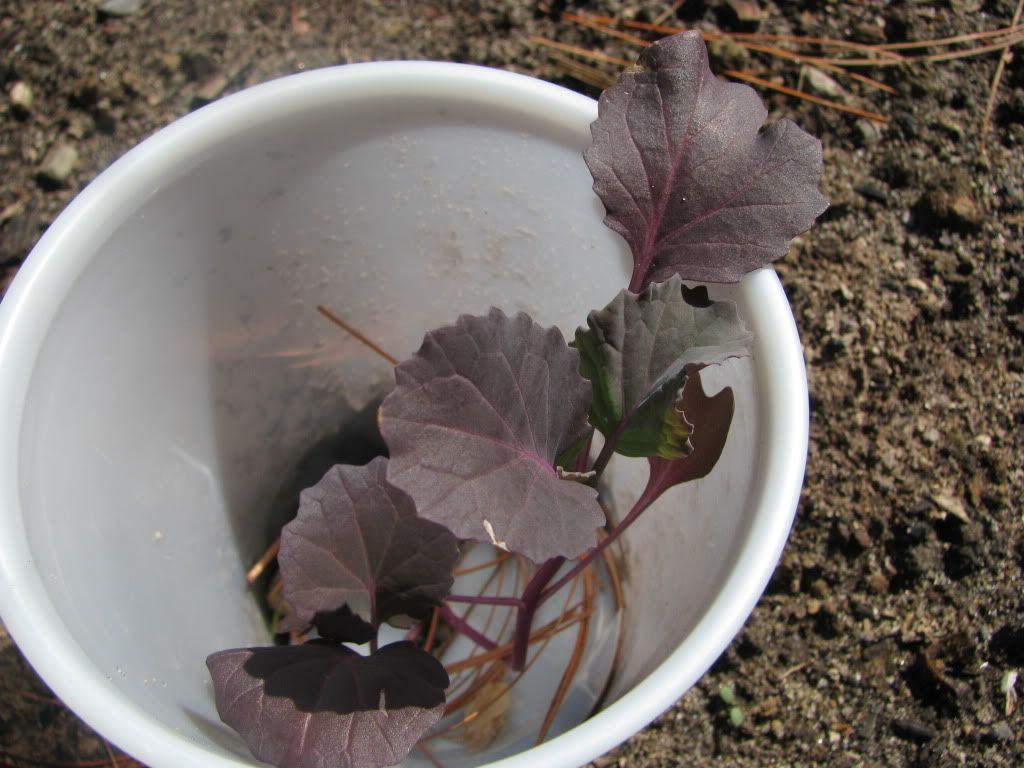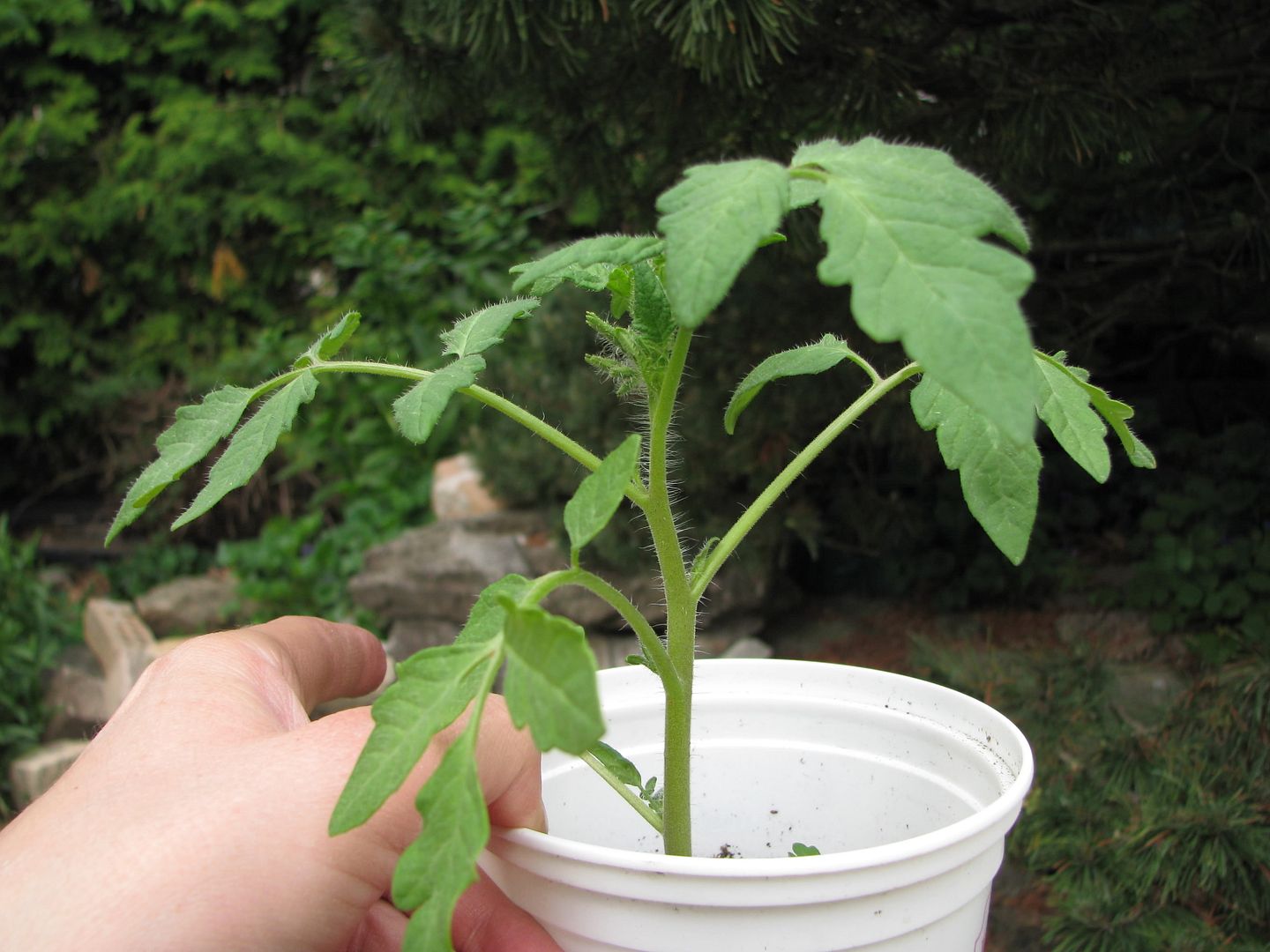
Hardy, woodland Hablitzia handles light frost as a seedling.
Temperature: Probably the best known is the air temperature or whether or not there will be frost. Most seed packets only give instructions in relationship to either first or last frost. This is important because frost tender plants keel over when touched by ice but following the instructions does not necessarily mean that they will thrive.
Soil temperature is also important for the growth of the plant. You may have noticed that some plants just seem to sit there until the temperatures rise and they they burst into growth. Not all soils warm at the same rate in the spring. Heavy clay soils take longer to warm then light sandy soils. Loamy soils hold moisture so I presume they would moderate the temperature. Besides, that crumbly beautiful loam is something to aspire too.
Topography will effect how your soil warms too. Sunny slopes will warm more quickly than those that slope north. The advantage is quicker thaws but the disadvantage is late frosts killing early blossoms so no fruit. Slight variations in landscape can be used to your advantage. Plant water loving, cool weather crops like most brassicas in the little dips and heat loving, dry tolerant plants like sweet potatoes (they'll grow better if not droughted) on the rises.
Buildings, trees and other barriers to wind, sun and rain will also affect whether or not soils are ready to work.
The point? It may be less stressful for certain plants to hold off a week until heavy soils are warmer. Got sandy soil? You could plant earlier but be wary of late frosts.
Give garlic the jumpstart and plant in the fall.
Weather Patterns: Seasonal drought, rainy periods or cylical flooding obviously will effect planting. One Ottawa application is that with the high water table of spring, planting out carrots a few weeks after hard frost but before last frost date gets good germination. In the height of summer, it can be harder to germinate a fall crop of carrots without help - either daily watering or a germination board.
Of course weather patterns on a large scale include seasons. For example, it is a good idea to plant anything that bolts easily in heat like florence fennel, chinese cabbage in mid-late summer so that it matures in the cool weather of fall.
On the small scale, seed just before rain and transplant under cloudy skies. I should make the weather forecast my homepage as it rules my gardening schedule. Seeding=Wet, Weeding=Sun, or S=W, is the formula I use to let nature help. Of course, weeding heavy clay after a few weeks of drought is pretty much hopeless without a pickax. But in moist spring soils or mulched beds, pulling young weeds in the sun and tossing them roots up will kill them quick (the occasional weed like purslane will just set seed anyhow - good thing it's edible).
The Point? Planting out or seeding when you can expect good soil moisture means less work. Also, don't fight the plant. Some like it hot and some do not.

Red cabbage with its cutworm collar. Started in March, set up in April.
Stage of Growth of Seedling: Have some determinate tomatoes that are in bud but stuck in a pot? I understand your desire to plant them out. At a certain stage, seedlings have to have more space or you run the risk of them flowering prematurely or otherwise having their growth checked or roots damaged. Potting them up may be a better alternative to planting out if the weather is not cooperating. I've been stuck on more than one occasion with bulky brassica or towering tomatoes and frost on the forecast. The former can go in the ground as long as the weather system doesn't fall into wintery patterns for too long but the former has to wait under cover.
Overly small plants often don't transplant well either possibly because of an under developed root system even if they would self seed.
The point? It doesn't always pay to seed early though if you do (and I always do for something), then you may need to plant before conditions are ideal. However, sometimes you win the weather jackpot by planting early. The point again? Why not seed twice a week or two apart.

Half winter sown tomato.
Insect and Disease Pressure: This will depend on what's pest-ering you but waiting a couple weeks after the first wave of carrot rust fly have flown through may lower damage. Some people have to get their tomatoes in the ground early to get a harvest before blight arrives. Hopefully your garden is free of anything serious. Other prevention techniques like providing a diverse habitat to beneficials, breaking up the blocks (or not providing an all you can eat buffet of one kind of plant in one area), rotation, and keeping your soil in good health will mean that even though you have the odd disease or pest, they are not a big problem. That said, some pests are a fact of life for some people and even the best management is not enough. You win some and some get eaten.
The point? Think of your pest like the weather and watch its patterns. Use with Exclusion, Intrusion, Removal and Rotation*
Harvest: If you are harvesting a plant all at once rather than hoping to eat it all summer, then you don't have the pressure to get it out as early as possible. Sauce tomatoes, pickles and canning beans could all fit into this category. Determinate or bush varieties work well for this too as they often fruit all at once. Alternatively, if you really, really, really want some greens early in the season, then try overwintering young plants of spinach or kale for early regrowth is the way to go.
So when do I plant out tomatoes?
Not earlier than May 14 and sometimes as late as the first week of June. Depends on the longterm forecast and the size of my plants. I have predominantly sandy soil in the working gardens on a slight western slope.
* Exclusion, Inclusion, Removal and Rotation: The way the bugs and I live with each other. Exclude them using barriers like row covers, cutworm colours and windbreaks. Include lots of plantings for beneficials like insects, birds and toads that predate or parasitize them. Also include plants that break up scent and sight signals of the pest. Remove - hand pick - pests when you see them. You may also want to remove any weeds that could harbour diseases like viruses or fungi or help overwinter pests. I generally don't because I like the diversity but it's an option if you are running out. Rotation is a more complex issue because it is done on a very microscale in most urban settings. More on this topic another day.


2 comments:
Then there is the "lets see what happens approach" which I take when I have plenty of extra seedlings coming along. I did this with my eggplants. I think it is too early, but one batch of seedlings was ready. I have another in the wings just in case it doesn't work out.
Yeah, I usually consult my 'oracles' when planting out, in other words, I plant out whenever seems good - a carefully balanced calculation based on a number of factors that I am mostly unconscious so I thought I'd parse them out. I like the half this week, half another approach.
Post a Comment